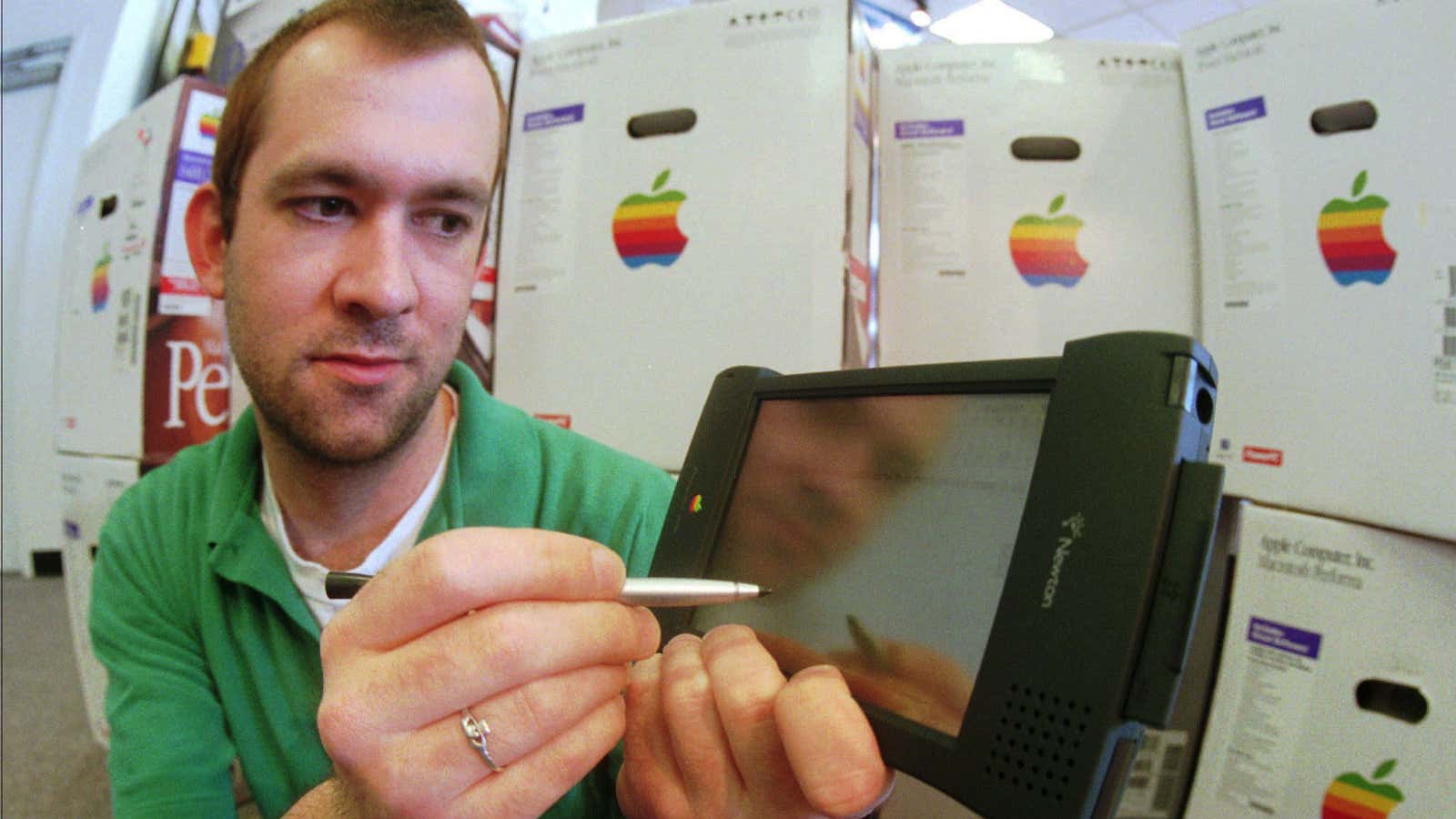An iPhone 5c with 16 gigabytes of storage retails for Rs 41,900 ($712) in India, before various discounts. That’s $110 more than it would cost, after taxes, at an Apple Store in New York. Little surprise then that the streets of India are not filled with young men and women toting colorful, plasticky iPhones. Instead it is Android devices that dominate.
So here’s the latest weapon in Apple’s poor-world arsenal: an entry-level iPhone 5c with only eight gigabytes of storage, but fully Rs 4,000 cheaper. Apple does not sell this model in the US, though it does in Europe. The introduction of a lower-end iPhone 5c follows Apple’s recent decision to reintroduce the discontinued iPhone 4 in India, Indonesia, and Brazil. Apple wheeled the iPhone 4 out of retirement in the hope that people will shell out Rs 20,000 for a four-year-old phone simply for the status of owning an Apple-branded device.
It may have worked. Apple reported strong sales, recording what Apple CEO Tim Cook called “strong double-digit” growth in India and other emerging markets, mostly on the back of the iPhone 4. If developing-world customers are willing to spend good money on an ancient device, maybe they will splash out on an inferior new one too?
Maybe not
There are three reasons to suggests that this is not a winning strategy. First, the new phone isn’t very much cheaper. India Today, a newsweekly, reports that after discounts a 16-gigabyte phone costs Rs 34,000 whereas the eight-gigabyte version is comes in at Rs Rs 33,500 after discounts.
Second, despite Apple’s impressive growth in India, it slipped a spot in sales by value in the last quarter of 2013. Sony is now the second-largest seller of smartphones by value in India, after Samsung—and it got there by focusing on the mid-market between Rs 10,000 and Rs 20,000, a segment Apple doesn’t play in.
Finally, there is the way Indians use phones. A big driver of smartphone usage in India is the consumption of audio and video, mostly Bollywood songs and films, as Tech2, an Indian tech blog, points out. Unlike their counterparts in the West, the vast majority of Indians tend not to pay for and download licensed copies from online sources. Instead, they visit their neighborhood mobile phone shop/chai stall/paan vendor, who often has a sideline in downloading content off the internet and copying it customers’ removable SD cards for a nominal fee.
In the absence of a removable card, iPhone users must make do with the phone’s on-board memory. While the people who buy iPhones and the folks who fill up their SD cards tend to fall in different demographics, an eight-gigabyte device doesn’t leave very much space for video content—however it’s been obtained—after users are done downloading Facebook, WhatsApp and a few games.
Quartz has argued before that if Apple wants to gain any significant traction in a country that is on its way to becoming the world’s second-largest smartphone market, it needs to offer cheaper phones. With its latest push, Apple is clearly going down that road. It is a shame the company is doing it with devices that aren’t more compelling for Indian consumers.
